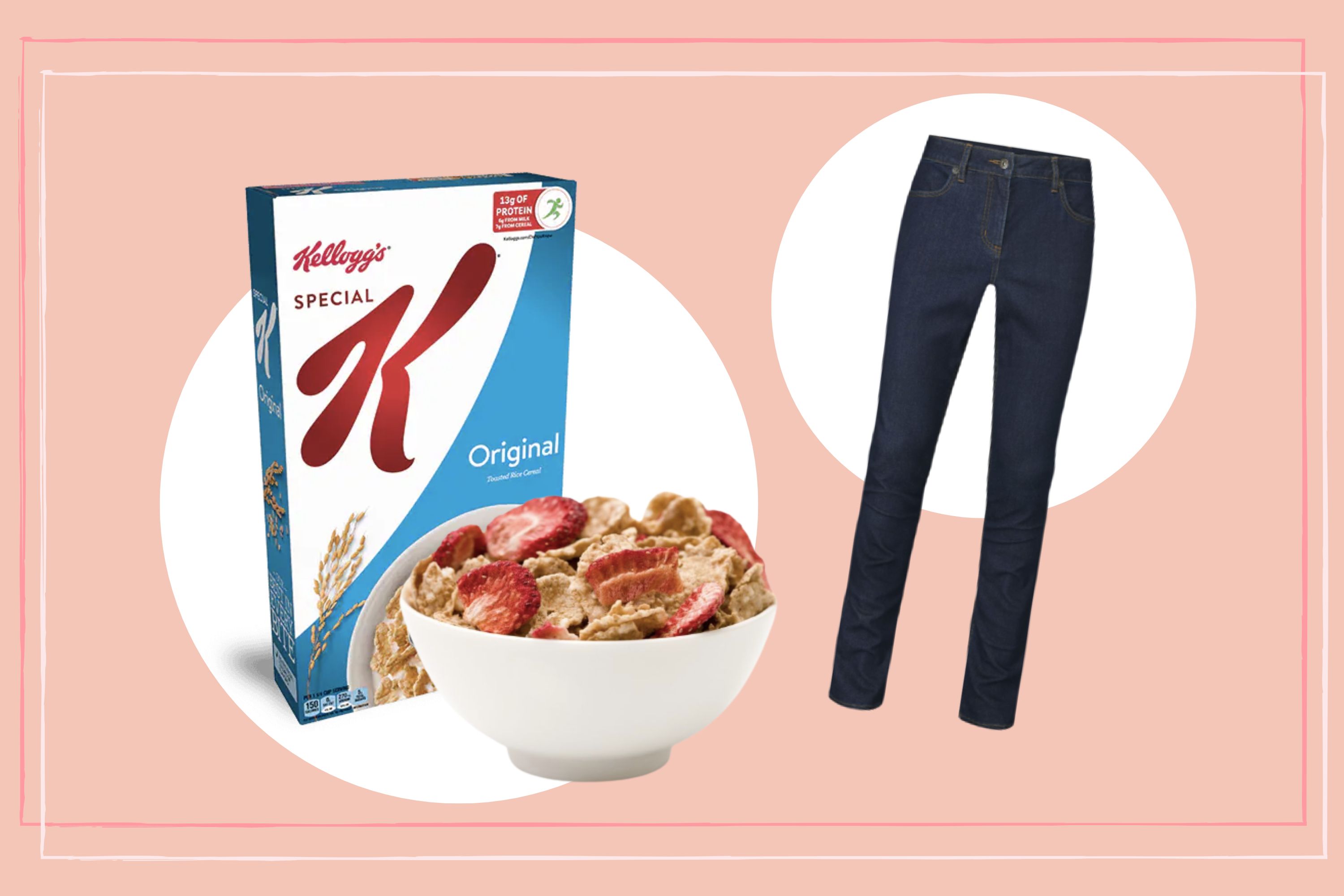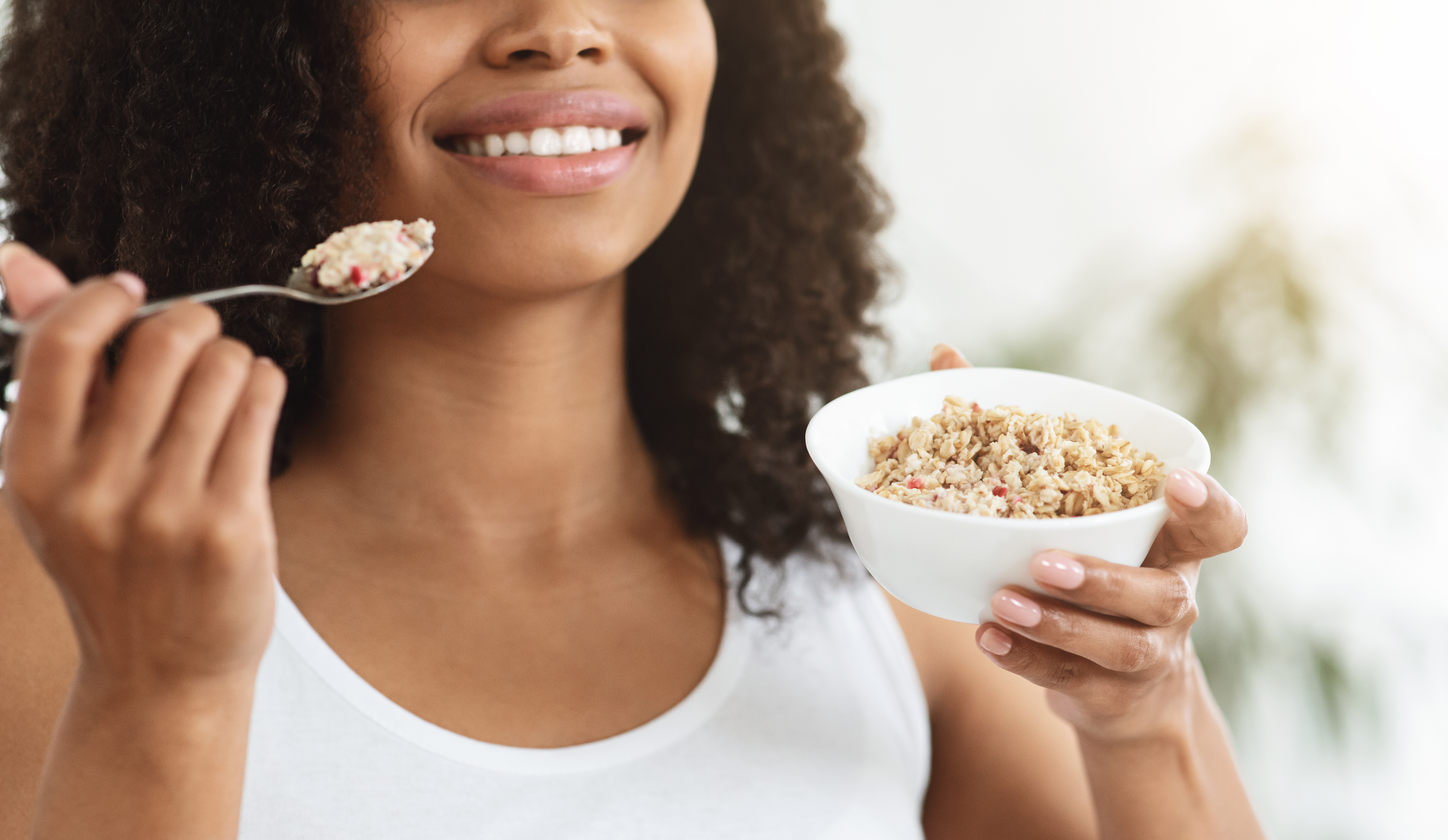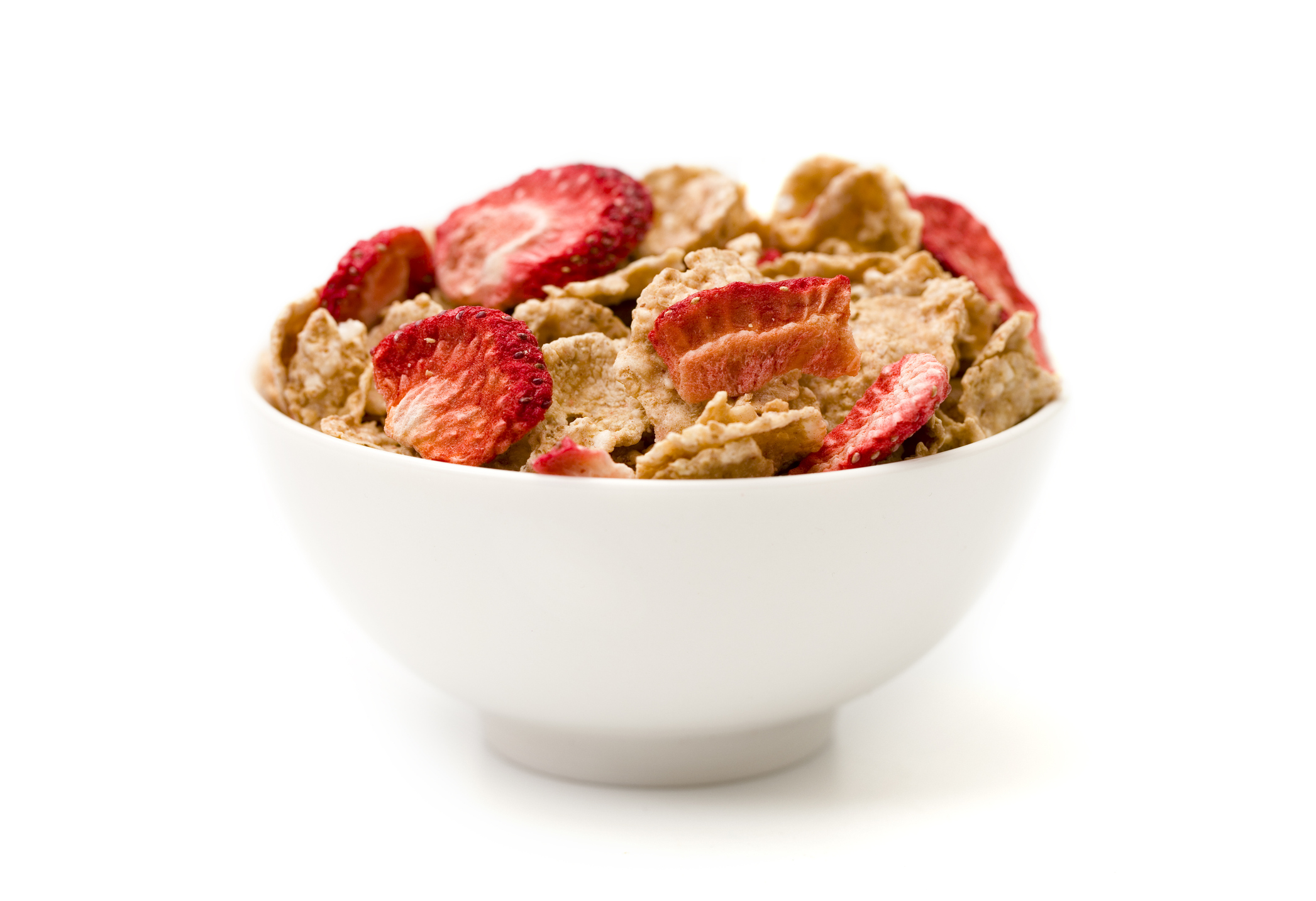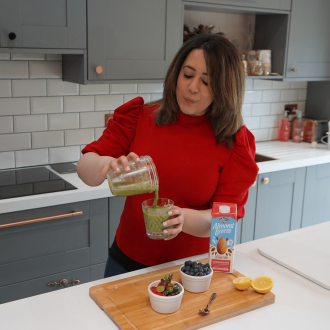The Special K Diet - can you really drop a jeans size in two weeks?
You've got to really love the cereal to try this


The Special K diet was first launched back in 2004 with the enticing promise that women could 'drop a jean size in 2 weeks'.
An extreme diet for people hoping to shed a few pounds quickly. The Special K plan is a calorie-cutting diet that works fast to deliver results by asking individuals to swap certain meals for a bowl of the cereal with milk instead. Whilst it sounds simple enough, many health professionals would not recommend the Special K diet as a long-term plan. With there being much healthier and more sustainable ways to lose weight should you like to.
"Special K is relatively low in fat and complex sugars, making it a go-to healthy cereal for a low-calorie breakfast," says clinical nutritionist Marina Abdalla. "Although fortified in vitamins and minerals like Vitamin A, C, E, B vitamins and potassium it doesn't provide all the nutrients an individual would need to make the Special K diet a sustainable, long-term meal replacement."
What is the Special K diet?
The Special K diet is a 14-day program that sees people eat the cereal for two of their three meals a day. It's suggested that by swapping out meals with Special K portions will encourage weight loss.
Dieters tend to eat Special K with low-fat milk for breakfast and lunch. Followed by a healthy evening meal thats packed with fat-burning foods like oily fish, lean protein and fruit and vegetables.

It proved popular when first introduced back in the early 2000s, for being cheap, convenient and easy to follow. Those on the plan also wouldn’t have to starve themselves - as the cereal worked as a replacement meal that could actually be eaten. This seems much more satisfying than having a shake or something similar.
Special K diet plan
- Breakfast: One serving of Special K cereal with skimmed milk and fruit.
- Lunch: Repeat your breakfast meal or substitute with a Special K Protein Meal Bar or Protein Shake.
- Dinner: Tuck into an evening meal of your choice.
Whilst the evening meal is up to you, the idea is that individuals will choose a healthy low-calorie meal that includes some five-a-day portions. Whilst on the diet, Kellogg's recommend healthy foods such as fruits, greek yogurt, low-fat milk, fish, chicken, vegetables and dairy that are low in carbs and fat content.
GoodtoKnow Newsletter
Parenting advice, hot topics, best buys and family finance tips delivered straight to your inbox.
Looking for inspiration? The old Kellogg's Special K online plan (which is now unavailable) suggested dinners like grilled salmon and veg, a tasty prawn stir fry or a spring chicken tray bake.
Dieters are also encouraged to enjoy two healthy snacks throughout the day. Be that fruits and vegetables or the Special K cereal bars.
- Snacks: Try Special K Protein Meal Bars, Protein Shakes, Breakfast Shakes, Protein Granola Bars, Crackers, Cracker Chips, or Popcorn.
Kellogg's have also shared a number of low-calorie snack ideas on their social pages. And these can definitely be enjoyed as part of the Special K diet plan. We especially like the look of this crunchy banana popsicle which you can whip up with just 3 ingredients. And you can find more Kellogg's recipes like this to try on their official website.
How does the Special K diet help you to lose weight?
"The Special K diet helps you lose weight by restricting your calorie consumption," explains Nutritionist Marina Abdalla at Express Pharmacy. "By swapping two meals with a bowl of Special K slashes your calorie intake significantly, causing the body to be in calorie deficit.
A calorie deficit - Abdalla explains - is when "a person loses weight as they burn more energy than the energy consumed."
According to the NHS website, the daily calorie intake for a woman is 2,000 and 2,500 for a man. If you do the maths - two bowls of Special K a day is less than 400 calories (depending on your portion size and choice of milk) - and that's also half the number of calories recommended on another popular regime, the Fast 800 diet. So unless you're eating a huge greasy takeaway for tea, you'll definitely be under your daily calorie allowance.
Special K is also low in fat (1.3g in an 100g portion). And so swapping otherwise fatty meals for two bowls of this cereal will also benefit your body.
Indeed, the results of a 2002 study done at Purdue University (funded by Kellogg’s) showed that replacing regular meals with calorie and portion controlled cereal meals could result in weight loss. Study participants took in an average of 1,590 calories per day and cut their fat intake in half.
"Substituting cereal for higher-calorie meals can help people trim calories and fat," said study author Rick Mattes, PhD. "In the study, we found those reductions were doable and resulted in about a 4.4 pound weight loss over a two week period."
How much weight could you lose with the Special K diet?
According to Kellogg's, individuals can lose up to 6 pounds in 14 days on the Special K diet. The brand also had the famous slogan that you could 'drop a jeans size in 2 weeks' whilst following the plan.
This may sound too good to be true but science actually supports this statement. One 2015 study - funded by Kellogg’s - found that those on the Special K diet lost between 0 and 13 pounds at the end of two weeks. Some of these participants even lost up to 10 percent of their body fat. And as for average weight loss, the total after two weeks was around 3.5 pounds.
Of course, weight loss differs from person to person, being dependent on factors like age and genetics.
It's also important to note that whilst the Special K diet specifies the bowl servings (140g with 100ml milk), it does not provide details on content or portion control of your chosen third meal. As such, if your meal is loaded with fat and calories, the calorie savings from the rest of the day could be negated - and you won’t lose weight.

How many calories are there in a bowl of Special K?
There are 120 calories in a 140g bowl of Special K. This is Kellogg's recommended serving size which equates to about the size of the palm of your hand.
Obviously, you'll be enjoying the cereal with some milk and this adds additional calories to your meal:
- Skimmed milk (100ml) + Special K (140g) = 155 cal (an extra 35 calories)
- Semi-skimmed milk (100ml) + Special K (140g) = 167 cal (an extra 47 calories)
- Whole milk (100ml) + Special K (140g) = 188 cal (an extra 68 calories)
Special K diet pros and cons
Pros
✅ Easy: The Special K diet is straightforward without too much weighing and measuring (once you’ve measured the serving size a couple of times you’ll know what to do without scales).
✅ Cheap: Replacing a meal with cereal and milk is far cheaper than buying in specialist meals or lots of fruit, veg, lean protein and grains. "It can therefore reduce the cost of weekly shopping," says Marina.
✅ Accessible: "Special K can be purchased in any supermarket," says Marina.
✅ Fast: No need to learn any new recipes and your bowls involve "no cooking preparation or cooking appliances required".
✅ High in fibre: Helping you to feel full and less prone to snacking. "The fibre within Special K provides a slow release of energy keeping your blood sugar levels stable," Marina tells us.
✅ You can still eat what you love: Well, to a certain extent. No one’s advocating tucking into a giant pizza or a tub of ice cream. But within reason, dieters can enjoy a good meal at the end of the day, as long as it doesn’t contain too many calories or too much fat.
✅ There’s some variety: There are 10 different types of Special K cereal to choose from, including Original, Red Berries, Chocolate, Peach & Apricot, Creamy Berry Crunch, Oats & Honey, Fruit & Nut, Nourish Berries, Nourish Seeds and Nourish Cranberry & Apple to help mix things up a bit. Kellogg’s have also increased the range of snacks available since the diet first launched to add more choice for followers of the plan.
✅ Free: There are no weekly diet club fees to pay and the ingredients are cheaper than buying a ‘normal’ lunch or say, a continental breakfast.
Cons
❌ The weight lost is most likely to return: "The Special K diet is not a long-term solution and there's a risk of weight gain once finished," says Marina.
❌ It's nutritionally limited: Eating cereal and milk twice a day is a lot less nutritional than eating eggs, fish, salad, fresh fruit and vegetables. "Nutritionists wouldn't recommend that this would be the best way to lose weight due to the lack of variety and consumption of key vitamins and minerals required for optimum body performance," she adds.
❌ Dangerous for people with certain conditions: If you are at all concerned, you should not do the diet, and instead eat a healthy, balanced diet combined with regular exercise.
❌ Third meal rule: "Little guidance is provided on what meals should be consumed for dinner, which may result in overeating," she tells us.
❌ It could get boring: Eating the same thing 14 times in one week could start to grate after a while. Dieters may find themselves desperate for a change on day three.
❌ Mood swings: We've all heard of being hangry. "Reduced calorie consumption may affect mood and concentration," points out Marina.
❌ May be difficult to follow in social settings: As Marina puts it: "Who wants to whip out a bowl of cereal at a social gathering?!"
The Special K diet: A Nutritionist's verdict
Nutritionists like Marina Abdella would not recommend the Special K diet.
"I'll pass," she tells us. "A good Nutritionist would always encourage a healthy balance of different food groups. Food should still provide a sense of enjoyment, nourishing you with the energy and calories you need to attain your weight loss goals.
"There are millions of healthy swaps that can be made in replace of your regular meals that will achieve the long-lasting weight loss results that you want. Swap your chocolate bar snack for sliced apple and peanut butter; high in protein and super tasty."

Marina is a Registered Nutritionist with the Association for Nutrition (AfN). A graduate of the London Metropolitan University, she has over 5 years’ experience in the industry, having worked with multiple private clinics in London, as well as several other renowned corporations and top Gastroenterologists in Harley Street, London.
Related features:
- 7 day detox plan
- Lose 2 stone in 8 weeks diet plan
- What is the 1,000 calorie meal diet?
- What is the Keto diet?
- The Sirtfood Diet
- What is reverse dieting?
Video of the Week:

Emily Stedman is the former Features Editor for GoodTo covering all things TV, entertainment, royal, lifestyle, health and wellbeing. Boasting an encyclopaedic knowledge on all things TV, celebrity and royals, career highlights include working at HELLO! Magazine and as a royal researcher to Diana biographer Andrew Morton on his book Meghan: A Hollywood Princess. In her spare time, Emily can be found eating her way around London, swimming at her local Lido or curled up on the sofa binging the next best Netflix show.